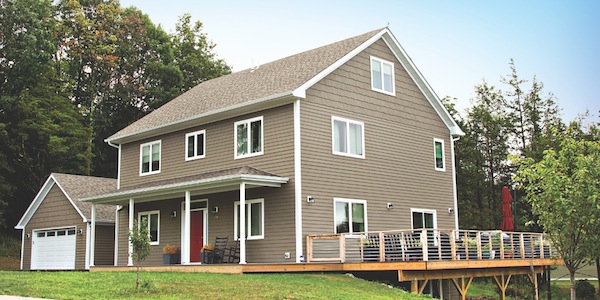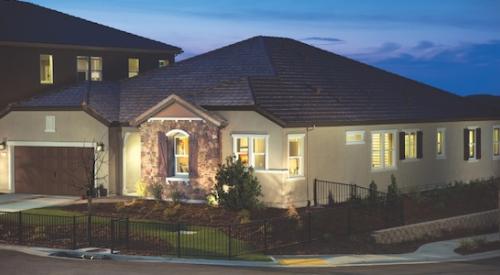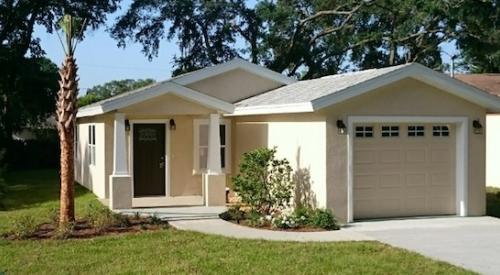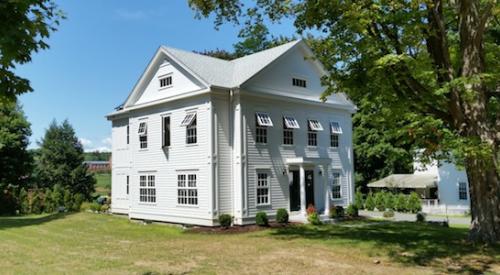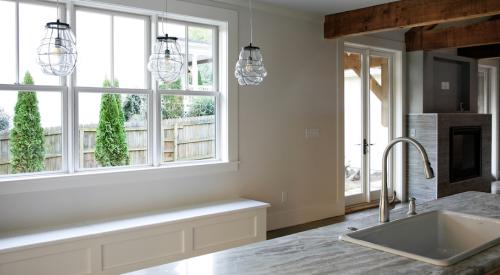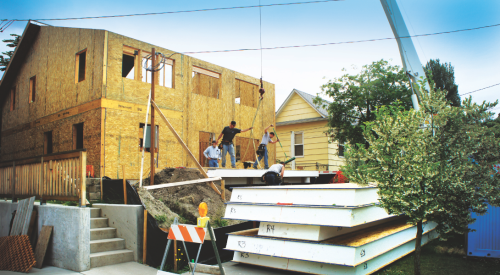Consumers know that sustainability, energy efficiency, and green building have tangible environmental, comfort, and financial benefits for both homeowners and their community. And for builders, while building net zero energy houses is doing the right thing, it also differentiates your product and your business.
Homes built to U.S. Department of Energy specs meet all of the program requirements of Energy Star Version 3.0 and Indoor airPLUS. They also meet WaterSense’s hot water distribution requirements and conform to the 2012 International Energy Conservation Code’s insulation standards. In addition, homes built in regions with a significant solar resource are required to have either an installed solar electric system or include details that allow a solar electric system to be installed in the future with minimal to no cost penalty. The following award-winning homes demonstrate the business and environmental opportunities that sustainable building affords.

Palo Duro Homes | Via del Cielo, Santa Fe, N.M.
Albuquerque-based Palo Duro Homes has built more DOE Zero Energy Ready Homes (ZERH) than any builder in the nation. It has certified 186 homes as DOE Zero Energy Ready and another 235 to the DOE Builders Challenge, ZERH’s precursor. Owner Tom Wade says Palo Duro’s average sales price has increased by approximately $30,000. “For homeowners, the benefits are lifelong energy efficiency and savings, better indoor air quality, and less impact on our environment overall,” Wade says. Palo Duro continues to offer a net zero energy upgrade option: roof-mounted, grid-tied solar electric panels enabling the home to achieve a Home Energy Rating System (HERS) Index score of 0; a solar thermal hot water system, and a high-efficiency heat pump with a cooling efficiency of SEER 15 and a heating efficiency of HSPF 9.0 (exceeding the federal minimum requirements of SEER 13 and HSPF 7.7 for cooling and heating equipment, respectively). Palo Duro’s net zero energy ready homes are 40 percent to 100 percent more energy efficient than a code-built home.
PROJECT DETAILS
- Layout: 4 bedrooms, 2½ baths, 2 floors
- Conditioned space: 2,215 sf
- Climate zone: IECC 4B, mixed-dry
- Completion: August 2014
- Category: Production
MODELED PERFORMANCE DATA
- HERS Index: without PV 48
- Projected annual utility costs: without PV $1,483
- Projected annual energy cost savings (compared with a home built to the 2012 IECC): without PV $833
- Annual energy savings: without PV 78,373 kWh, 114 therms

High Performance Homes | Chamberlain Court, Gettysburg, Pa.
Kiere DeGrandchamp considered several home labeling programs when he founded High Performance Homes, but chose the DOE’s Zero Energy Ready Home program as his cornerstone. Key to high-performance home construction for DeGrandchamp is getting all the parts to work together. As he puts it, “If you do it wrong, you can mess it up. That’s why I think the third-party verification that DOE requires is so important.” DeGrandchamp reports that buyers now seek out his company’s homes for their whole-house energy-efficiency approach. DeGrandchamp tells of a homebuyer in Colorado who read about a speech the builder gave to the 18th Annual Congressional Renewable Energy and Energy Efficiency Expo, and then called High Performance Homes, ready to buy a lot that day. “He told me ‘I’ve been looking for years for a builder who could put it all together,” DeGrandchamp says.
PROJECT DETAILS
- Layout: 4 bedrooms, 4½ baths, 2 floors, finished basement
- Conditioned space: 6,869 sf
- Climate zone: IECC 5A, cold
- Completion: February 2015
- Category: Production
MODELED PERFORMANCE DATA
- HERS Index: without PV 37, with PV 23
- Projected annual utility costs: without PV $3,050, with PV $1,956
- Projected annual energy cost savings (compared with a home built to the 2009 IECC): without PV $2,801, with PV $3,895
- Builder’s added cost over 2009 IECC: without PV $30,000, with PV $55,000
- Annual energy savings: without PV 26,676 kWh, with PV 37,095 kWh

GreenHill Contracting Preserve | Esopus, New Paltz, N.Y.
New Yorkers may be nervous about extreme weather after Superstorm Sandy, but Anthony Aebi of Greenhill Contracting, north of New York City, believes his homeowners can rest easy. Aebi says his homes should be able to withstand 200-mile-per-hour winds, an F5 tornado, a Category 6 hurricane, or a Magnitude 9 earthquake. Starting in 2007, all Greenhill homes are built using insulated concrete forms (ICF), which offer improved disaster resistance—significant market differentiation in and of itself. Aebi takes it a step further with net zero. He built his first net zero energy home in 2008; it was one of the first in the Northeast. This year, three of his homes at Preserve in Esopus, a 25-home community, earned Housing Innovation Awards. Aebi contends that this level of performance can be built in the same price range as a code-built house. “Because of the energy savings,” he says, “homeowners are not spending $3,000 to $6,000 in energy bills every year. These improvements will pay for themselves.”
PROJECT DETAILS
- Layout: #20: 4 bdr, 3½ bath, 4 fl + bsmt; #26: 5 bdr, 3½ bath, 4 fl + bsmt; #28: 3 bdr, 3½ bath, 4 fl + bsmt
- Conditioned space: #20: 4,454 sf; #26: 4,208 sf; #28: 4,208 sf
- Climate zone: 6A, cold
- Completion: #20: October 2014; #26, #28: May 2015
- Category: Custom
MODELED PERFORMANCE DATA
- HERS Index: #20: w/o PV 26, w/PV -3.5; #26: w/o PV 28, w/PV -3; #28 w/o PV 26, w/PV -1
- Projected annual utility costs: #20: w/o PV $2,024, w/PV $136; #26 w/o PV $2,061, w/PV $137; #28 w/o PV $1,918, w/PV $270
- Projected annual energy cost savings (compared with a home built to the 2009 IECC): #20: w/o PV $2,112, w/PV $4,000; #26 w/o PV $2,009, w/PV $3,933; #28: w/o PV $2,176, w/PV $3,824
- Builder’s added cost over 2009 IECC: #20, #26, #28: w/o PV $45,000, w/PV $73,000
- Annual energy savings: #20: w/o PV 72.9 MMBtu, w/PV 122.5 MMBtu; #26: w/o PV 70.2 MMBtu, w/PV 120.7 MMBtu; #28: w/o PV 73.9 MMBtu, w/PV 117.2 MMBtu
